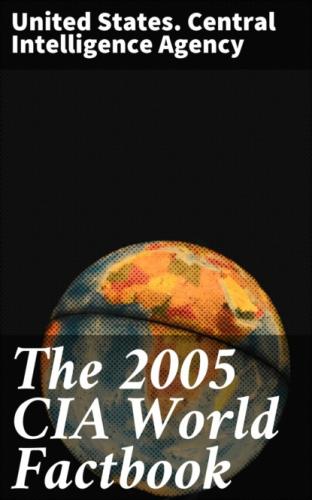Committee for Campesino Unity or CUC; Coordinating Committee of
Agricultural, Commercial, Industrial, and Financial Associations or
CACIF; Mutual Support Group or GAM
International organization participation:
BCIE, CACM, FAO, G-24, G-77, IADB, IAEA, IBRD, ICAO, ICFTU, ICRM,
IDA, IFAD, IFC, IFRCS, IHO, ILO, IMF, IMO, Interpol, IOC, IOM, ISO
(correspondent), ITU, LAES, LAIA (observer), MIGA, MINUSTAH, NAM,
OAS, ONUB, OPANAL, OPCW, PCA, UN, UNCTAD, UNESCO, UNIDO, UNOCI, UPU,
WCL, WCO, WFTU, WHO, WIPO, WMO, WToO, WTO
Diplomatic representation in the US: chief of mission: Ambassador Guillermo CASTILLO chancery: 2220 R Street NW, Washington, DC 20008 telephone: [1] (202) 745–4952 FAX: [1] (202) 745–1908 consulate(s) general: Chicago, Denver, Houston, Los Angeles, Miami, New York, and San Francisco
Diplomatic representation from the US: chief of mission: Ambassador John R. HAMILTON embassy: 7–01 Avenida Reforma, Zone 10, Guatemala City mailing address: APO AA 34024 telephone: [502] 2331–154⅕5 FAX: [502] 2334–8477
Flag description:
three equal vertical bands of light blue (hoist side), white, and
light blue with the coat of arms centered in the white band; the
coat of arms includes a green and red quetzal (the national bird)
and a scroll bearing the inscription LIBERTAD 15 DE SEPTIEMBRE DE
1821 (the original date of independence from Spain) all superimposed
on a pair of crossed rifles and a pair of crossed swords and framed
by a wreath
Economy Guatemala
Economy - overview:
Guatemala is the largest and most populous of the Central American
countries with a GDP per capita roughly one-half that of Brazil,
Argentina, and Chile. The agricultural sector accounts for about
one-fourth of GDP, two-thirds of exports, and half of the labor
force. Coffee, sugar, and bananas are the main products. The 1996
signing of peace accords, which ended 36 years of civil war, removed
a major obstacle to foreign investment, but widespread political
violence and corruption scandals continue to dampen investor
confidence. The distribution of income remains highly unequal, with
perhaps 75% of the population below the poverty line. Other ongoing
challenges include increasing government revenues, negotiating
further assistance from international donors, upgrading both
government and private financial operations, curtailing drug
trafficking, and narrowing the trade deficit.
GDP (purchasing power parity):
$59.47 billion (2004 est.)
GDP - real growth rate:
2.6% (2004 est.)
GDP - per capita:
purchasing power parity - $4,200 (2004 est.)
GDP - composition by sector: agriculture: 22.7% industry: 19.5% services: 57.9% (2004 est.)
Labor force:
3.68 million (2004 est.)
Labor force - by occupation:
agriculture 50%, industry 15%, services 35% (1999 est.)
Unemployment rate:
7.5% (2003 est.)
Population below poverty line:
75% (2004 est.)
Household income or consumption by percentage share: lowest 10%: 1.6% highest 10%: 46% (1998)
Distribution of family income - Gini index:
55.8 (1998)
Inflation rate (consumer prices):
7.2% (2004 est.)
Investment (gross fixed):
14.9% of GDP (2004 est.)
Budget:
revenues: $2.878 billion
expenditures: $3.411 billion, including capital expenditures of $750
million (2004 est.)
Public debt:
32% of GDP (2004 est.)
Agriculture - products:
sugarcane, corn, bananas, coffee, beans, cardamom; cattle, sheep,
pigs, chickens
Industries:
sugar, textiles and clothing, furniture, chemicals, petroleum,
metals, rubber, tourism
Industrial production growth rate:
4.1% (1999)
Electricity - production:
6.608 billion kWh (2002)
Electricity - production by source: fossil fuel: 51.9% hydro: 35.2% nuclear: 0% other: 12.9% (2001)
Electricity - consumption:
5.76 billion kWh (2002)
Electricity - exports:
440 million kWh (2002)
Electricity - imports:
55 million kWh (2002)
Oil - production:
25,000 bbl/day (2004 est.)
Oil - consumption:
61,000 bbl/day (2001 est.)
Oil - exports:
3,104 bbl/day (2003)
Oil - imports:
NA
Oil - proved reserves:
263 million bbl (1 January 2002)
Natural gas - proved reserves:
1.543 billion cu m (1 January 2002)
Current account balance:
$-1.381 billion (2004 est.)
Exports:
$2.911 billion f.o.b. (2004 est.)
Exports - commodities:
coffee, sugar, petroleum, apparel, bananas, fruits and vegetables,
cardamom
Exports - partners:
US 53%, El Salvador 11.4%, Honduras 7.1%, Mexico 4.1% (2004)
Imports:
$7.77 billion f.o.b. (2004 est.)
Imports - commodities:
fuels, machinery and transport equipment, construction materials,
grain, fertilizers, electricity
Imports - partners:
US 34%, Mexico 8.1%, South Korea 6.8%, China 6.6%, Japan 4.4% (2004)
Reserves of foreign exchange and gold:
$3.084 billion (2004 est.)
Debt - external:
$5.969 billion (2004 est.)
Economic aid - recipient:
$250 million (2000 est.)
Currency (code):
